[EN/PL] ‘FAMILY’ by Paweł Althamer and Przemysław Matecki at Museum Jerke
![[EN/PL] ‘FAMILY’ by Paweł Althamer and Przemysław Matecki at Museum Jerke](http://blokmagazine.com/wp-content/uploads/2021/01/2-rodzina-museum-jerke-2020-4-1200x857.jpeg)
[EN]
text: Łukasz Gorczyca
It takes two stones to strike a spark. The encounter in a joint exhibition by the two artists Paweł Althamer (born 1967) and Przemysław Matecki (born 1976) might seem surprising only at first glance. Althamer, an artist with an international reputation, is known for actions in public space, installations, and his original sculptural works. Matecki is one of the most interesting painters of his generation. But let’s toss aside these genre classifications. Althamer is the creator of social sculptures in which the main role is played by interpersonal relations, and is also the founder of the Draftsmen’s Congress (the first edition of which was held during the Berlin Biennale in 2012)—an open and democratic debate on paintings, where anyone can participate and draw what they like. Similarly, for Matecki, the collision of various materials and means of imaging is fundamental. Even before taking up a series of painting collaborations (e.g. with Zbigniew Rogalski, Paweł Susid and Tomasz Ciecierski), working alone he continually introduced dialogue into his paintings—between the abstract substance of the paint and pictures clipped from magazines. It is thus no surprise that the encounter of the two artists turned into an energetic, three-year seance (often divided into all-night paint sessions), resulting in the exhibition of paintings entitled Family.
This title should be taken quite literally. The issue of strength and the need for community are among the main drivers for the work of both artists, but they were also brought together by family matters, everyday emotions and tensions in domestic life. The notion of “family” has a religious context linked with the Christian tradition, but also humanist, in the modern spirit of the family of mankind. And all these dimensions (along with the mini artistic family formed here spontaneously) are present in the joint works of Althamer and Matecki presented at the exhibition. Their emotional character conveys the tense political, social and personal atmosphere in which they were created. Thus geopolitical themes appear here (Belarus, Free Tibet, Switzerland–Poland), along with renewed ecclesiastical iconography (The Last Supper, Te Deum, The Crucifixion), intimate self-portraits (I Sit, I Lie, I Squat and Dance of Love), and even a reworked state emblem (Eagle). The artists eagerly take up expiatory tones, finding a liberating ritual in painting, in piling up images and symbols. This neo-humanist perspective allows them to address without embarrassment themes that seemingly couldn’t be taken up anymore, and to do so with zest and spirituality. This encounter and its material results offer the undeniable charm of a dialogue between a shaman and a charlatan.
Which of them is which? Althamer is attracted by drawing, figure, and spontaneously flowing narrative. Matecki is obsessively focused on building the structure of paintings, creating new frames and continually exceeding them. Most of the joint paintings are assemblages composed of various found objects or specially prepared sculptural elements. As a point of departure, they used earlier paintings by Matecki, which in the course of the work gradually disappeared under new layers, covering the fronts and backs of canvases in spontaneous gusts. In this manner, works arose stripped of any routine or stylistic intention, containing instead a discursive and spatial potential. The exhibition was arranged following this thread. The paintings reshape the found architecture of the museum, inviting interweaving and conversation between them. After all, it takes two stones to strike a spark.
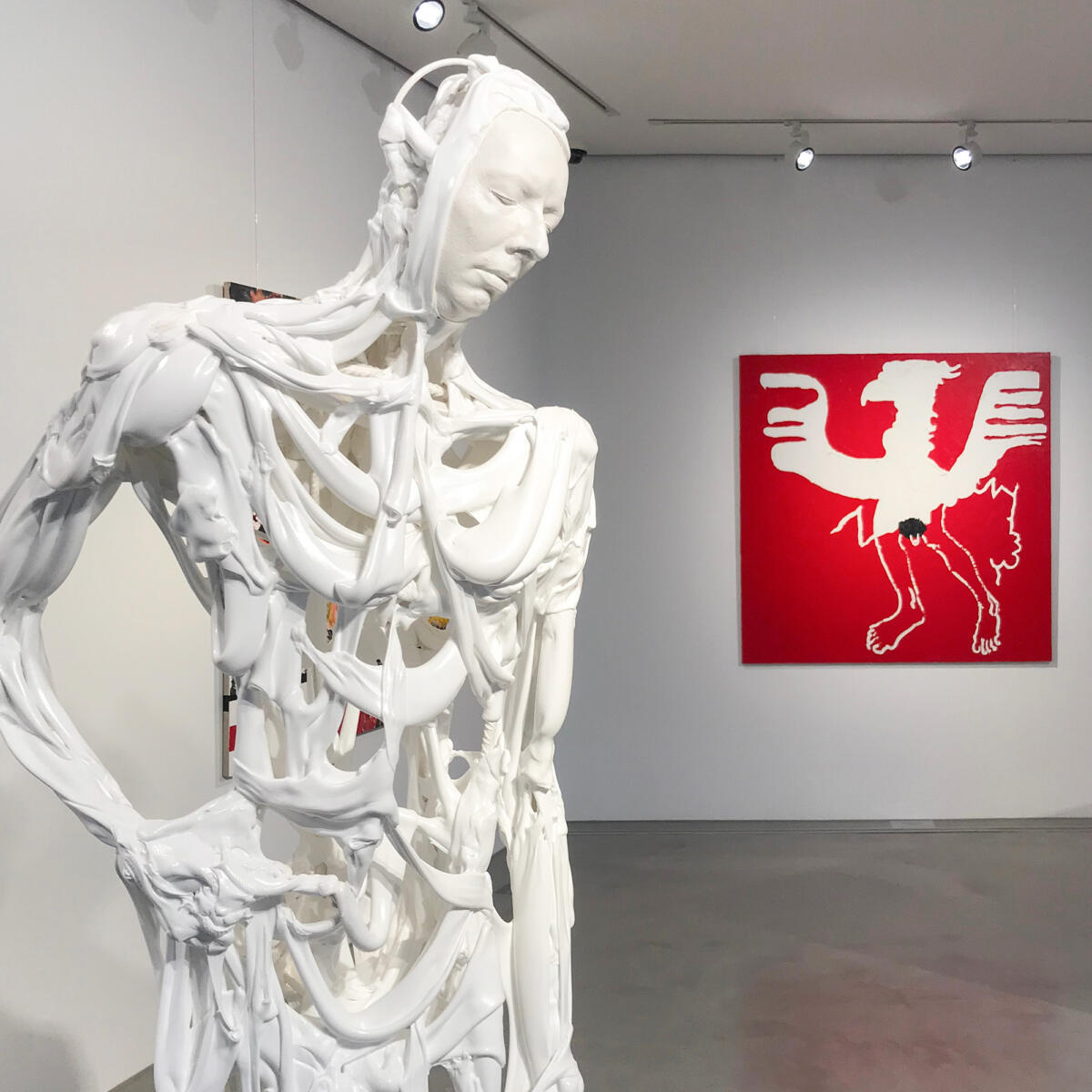
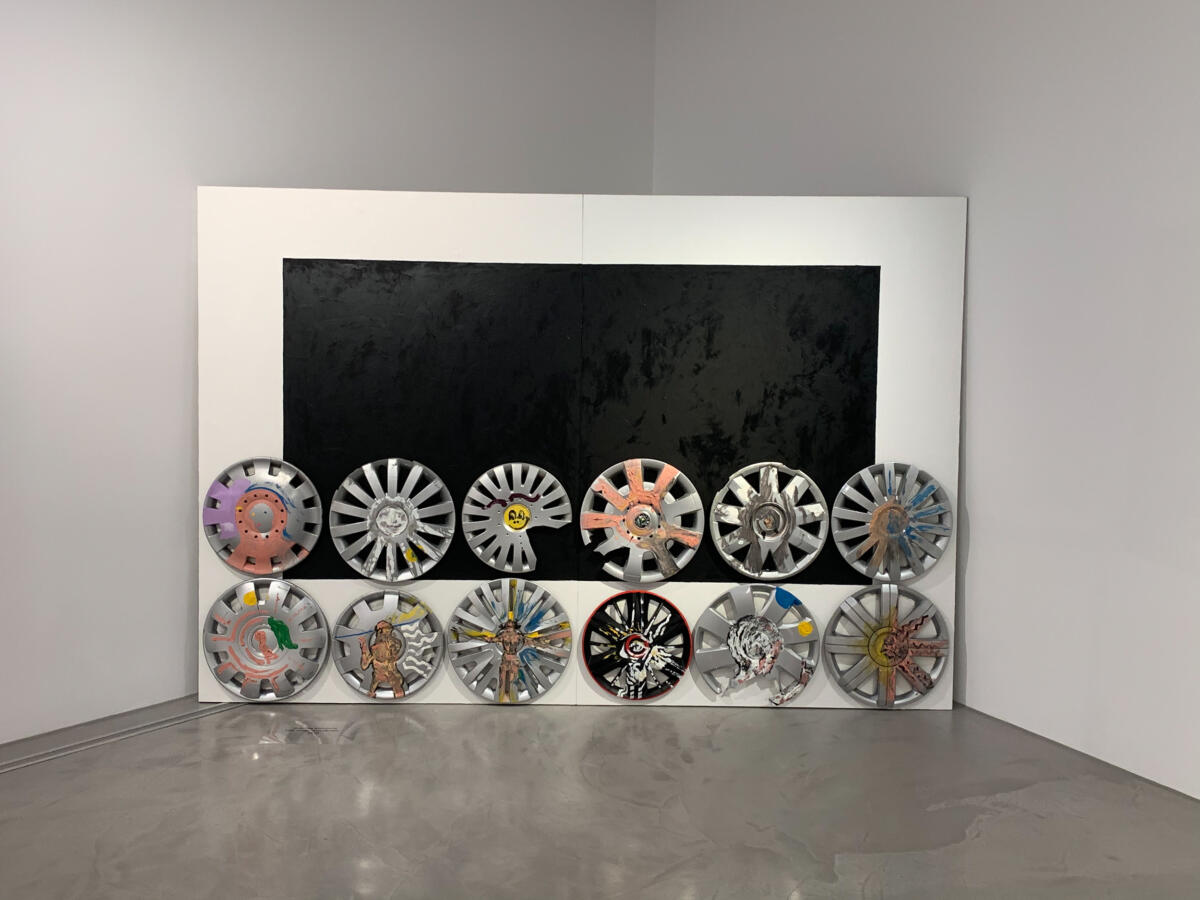

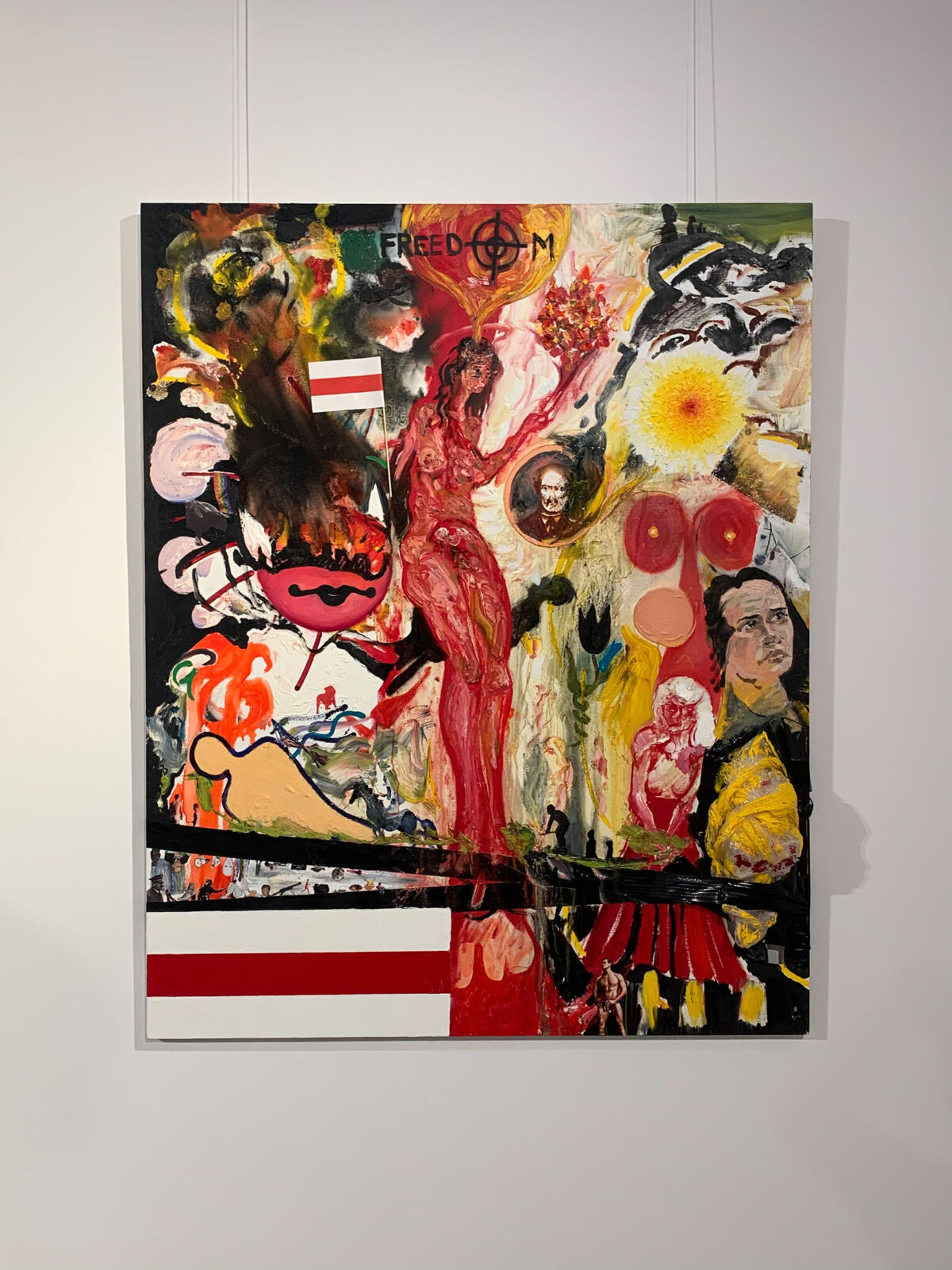
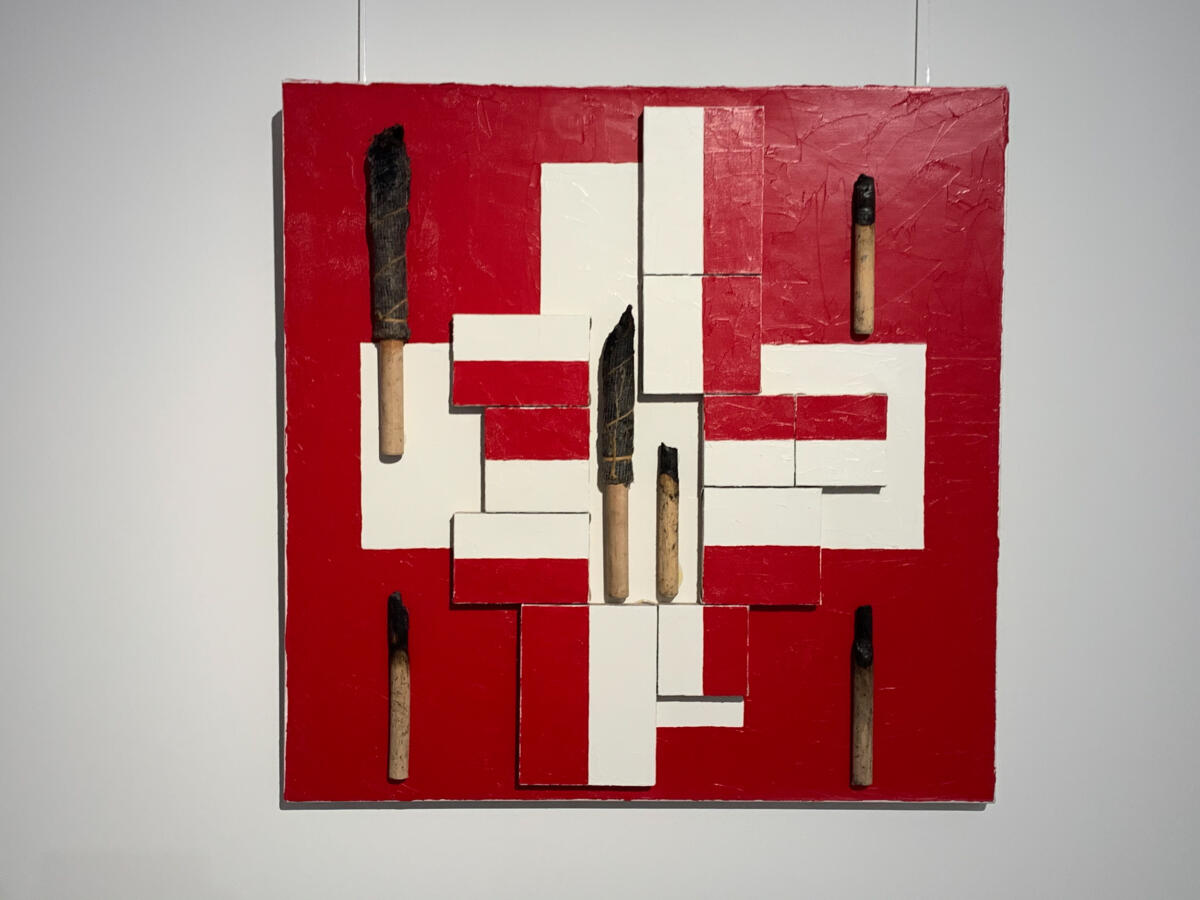


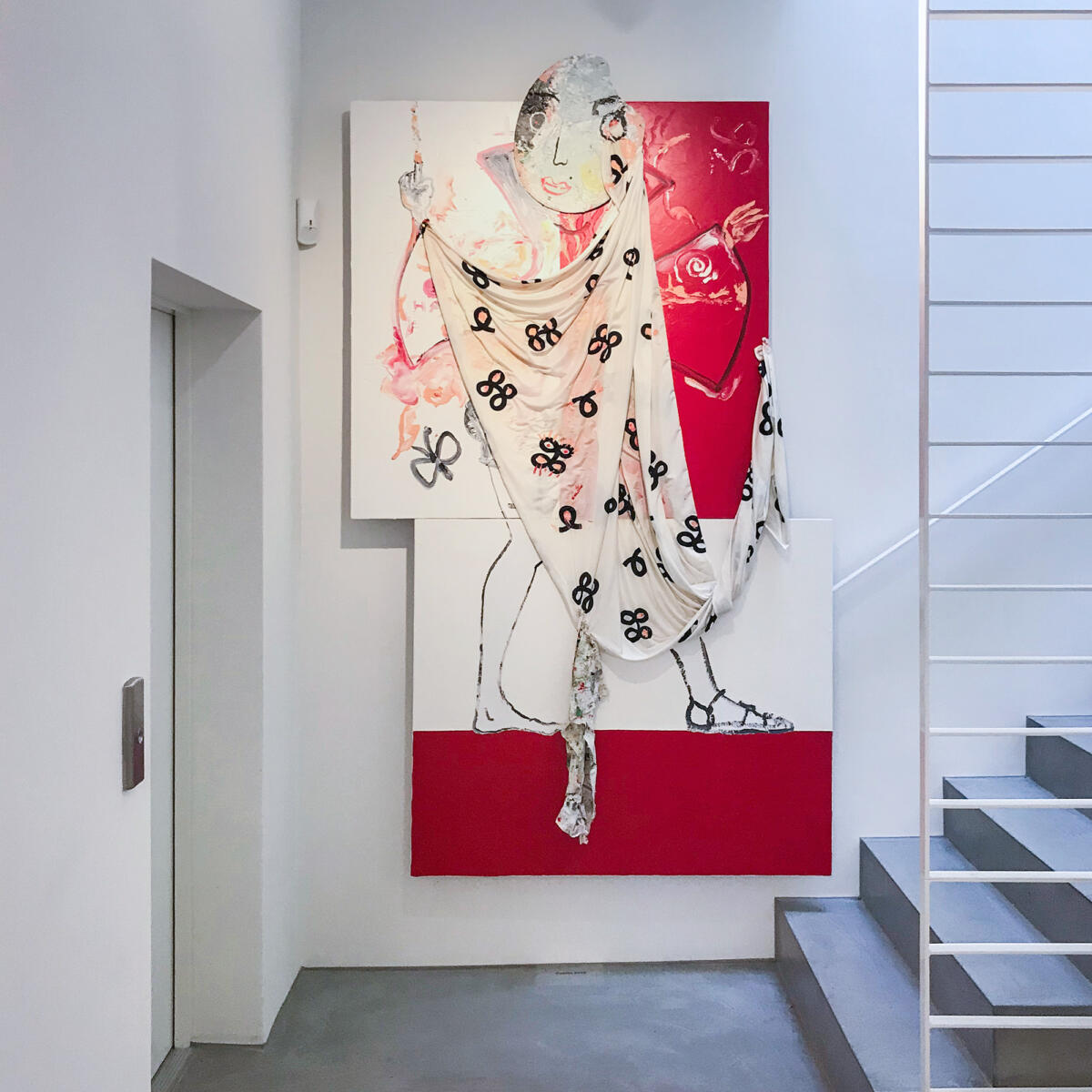
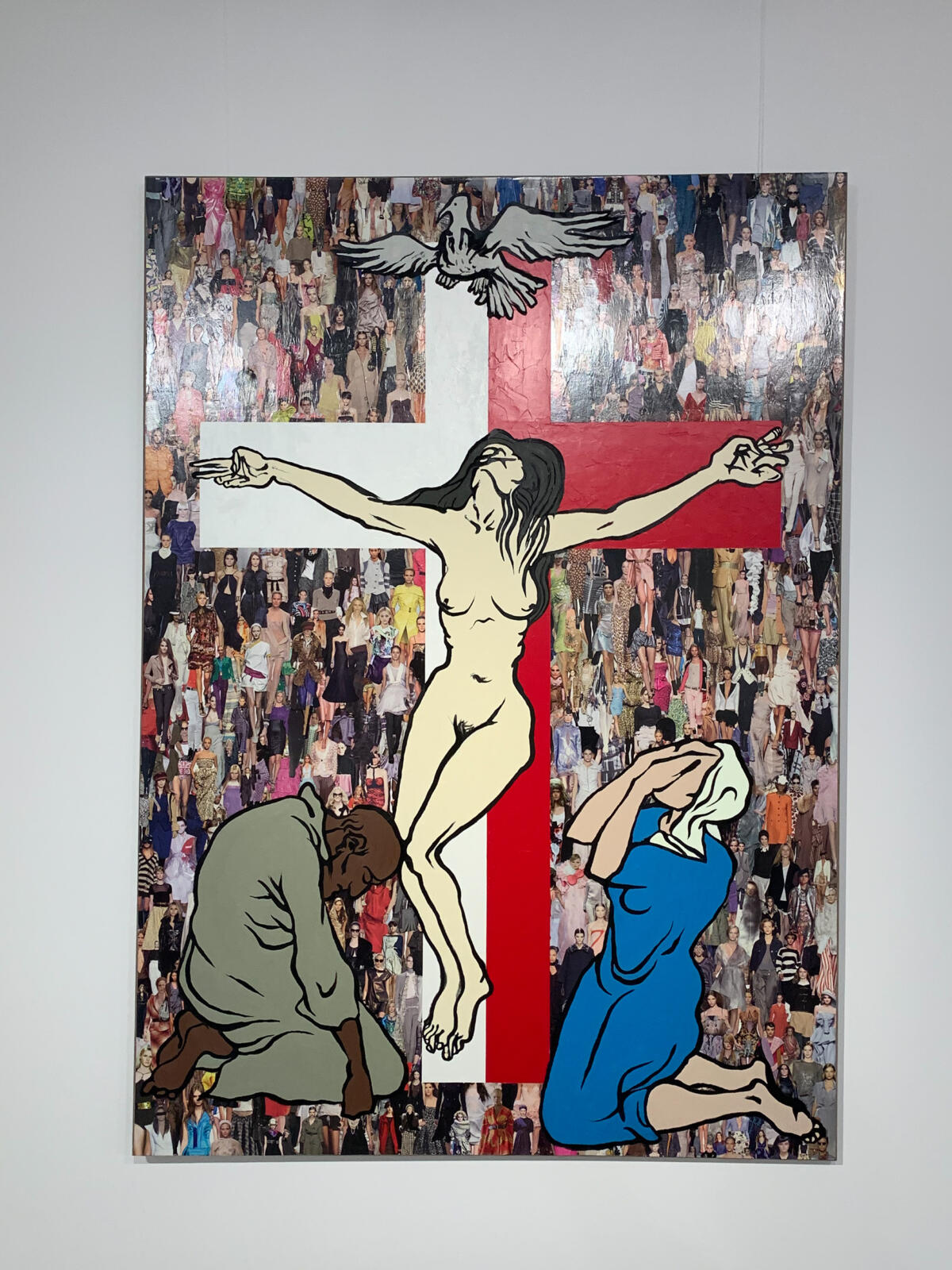
[PL]
tekst: Łukasz Gorczyca
Aby wzniecić iskrę potrzebne są dwa kamienie. Spotkanie na wspólnej wystawie dwóch artystów, Pawła Althamera (ur. 1967) i Przemysława Mateckiego (ur. 1976), tylko na pozór może wydawać się zaskakujące. Althamer, twórca o międzynarodowej reputacji, znany jest z działań w przestrzeni publicznej, instalacji i oryginalnej twórczości rzeźbiarskiej. Matecki to jeden z najciekawszych malarzy swojego pokolenia. Porzućmy jednak te gatunkowe klasyfikacje. Althamer to twórca rzeźb społecznych, w których główną rolę odgrywają relacje międzyludzkie, to również autor Kongresu rysowników (jego pierwsza edycja odbyła się podczas Berlin Biennale 2012 roku) – otwartej i demokratycznej debaty na obrazy, w której każdy może wziąć udział i rysować co zechce. Podobnie dla Mateckiego fundamentalne jest zderzanie różnych materii i sposobów obrazowania. Jeszcze zanim podjął kolejne malarskie kolaboracje (m.in. ze Zbigniewem Rogalskim, Pawłem Susidem czy Tomaszem Ciecierskim), pracując samotnie niezmiennie prowadził wewnątrz swych obrazów rozmowę – między abstrakcyjną materią farby, a wycinanymi z magazynów zdjęciami. Nie dziwi więc, że spotkanie obu artystów przerodziło się w trzyletni, energetyczny seans (dzielony na często całonocne paint sessions), którego owocem jest wystawa obrazów zatytułowana Rodzina.
Tytuł ten należy rozumieć jak najbardziej dosłownie. Pytanie o siłę i potrzebę wspólnoty jest dla obojga jednym z głównych motorów działania, ale połączyły ich również sprawy rodzinne, codzienne emocje i napięcia w życiu domowym. Pojęcie rodziny ma kontekst religijny związany z tradycją chrześcijańską, ale i ogólnohumanistyczny, w modernistycznych duchu rodziny człowieczej. I te wszystkie wymiary (wraz z sformowaną tu spontanicznie mini rodziną artystyczną), są obecne we wspólnych pracach Althamera i Mateckiego prezentowanych na wystawie. Ich emocjonalny charakter odpowiada napiętej atmosferze politycznej, społecznej i osobistej w jakiej powstawały. Pojawiają się tu zatem wątki geopolityczne (Białoruś, Wolny Tybet, Szwajcaria-Polska), odnowiona ikonografia kościelna (Ostatnia wieczerza, Te Deum, Ukrzyżowanie), jak i intymne autoportrety (Siedzę, leżę, kulę się i Taniec miłości), a nawet przeredagowane godło państwowe (Orzeł) Artyści chętnie wchodzą tu w ekspiacyjne tony, upatrując wolnościowego rytuału w malowaniu, w spiętrzaniu wizerunków i symboli. Ta neohumanistyczna perspektywa pozwala bez skrępowania podejmować tematy, zdawałoby się, już dziś niepodejmowalne, czynić to z animuszem i na swój sposób uduchowiony. To spotkanie i jego materialne efekty mają w sobie niezaprzeczalny urok rozmowy szamana z szarlatanem.
Kto z nich jest kim? Althamera pociąga rysunek, figura i spontanicznie rozwijająca się opowieść. Matecki jest obsesyjnie skupiony na budowaniu struktury obrazów, tworzeniu nowych ram i ich nieustannym przekraczaniu. Większość ze wspólnych obrazów to asamblaże złożone z różnych, znalezionych przedmiotów lub specjalnie przygotowanych elementów rzeźbiarskich. Jako punkt wyjścia służyły wcześniejsze obrazy Mateckiego, które w toku pracy stopniowo znikały pod nowymi warstwami, te zaś w spontanicznych porywach pokrywały lica, ale i odwrocia płócien. W ten sposób powstały prace, które pozbawione są jakiejkolwiek rutyny czy stylistycznego zamiaru, mają w sobie natomiast potencjał dyskursywny i przestrzenny. Idąc tym tropem została zaaranżowana wystawa – obrazy odkształcają zastaną architekturę muzeum, zapraszają do kluczenia pomiędzy i do rozmowy. Aby wzniecić iskrę potrzebne są bowiem dwa kamienie.
Imprint
| Artist | Paweł Althamer, Przemysław Matecki |
| Exhibition | FAMILY |
| Place / venue | Museum Jerke, Recklinghausen, Germany |
| Dates | 24 October 2020 – 9 January 2021 |
| Website | www.museumjerke.com |
| Index | Łukasz Gorczyca Museum Jerke Paweł Althamer Przemysław Matecki |

